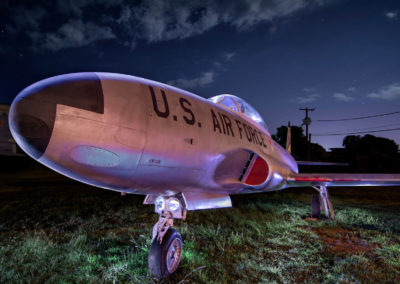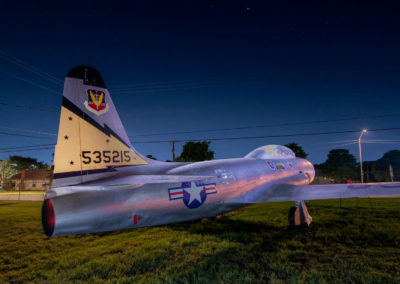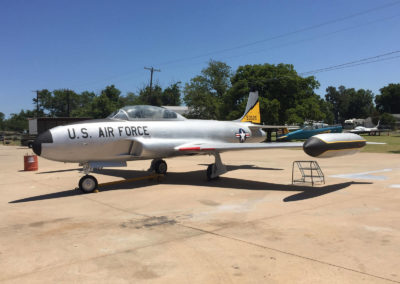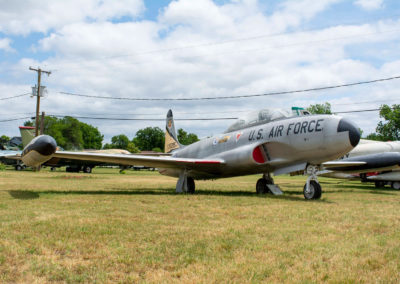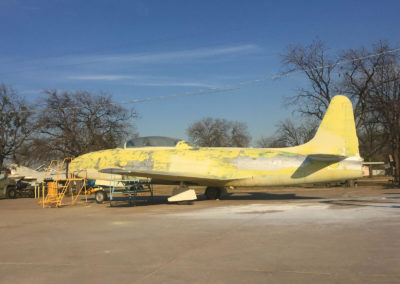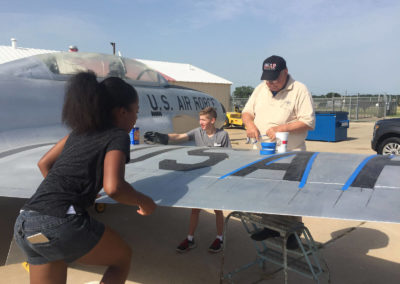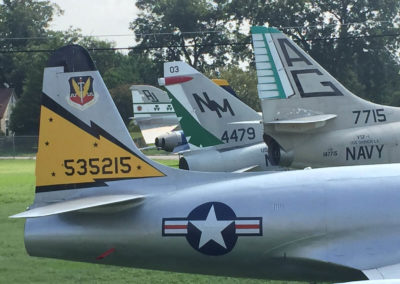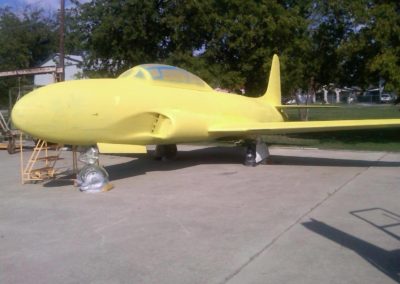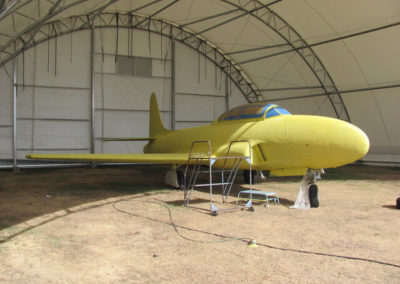T-33A Shooting Star
The two-place Lockheed T-33 Shooting Star was designed for training pilots already qualified to fly propeller-driven aircraft to fly jets. It was developed from the single-seat F-80 fighter by lengthening the fuselage about three feet
Warbird Overview
The two-place Lockheed T-33 Shooting Star was designed for training pilots already qualified to fly propeller-driven aircraft to fly jets. It was developed from the single-seat F-80 fighter by lengthening the fuselage about three feet to accommodate a second cockpit.
ABOUT THE T-33A SHOOTING STAR
The two-place Lockheed T-33 Shooting Star was designed for training pilots already qualified to fly propeller-driven aircraft to fly jets. It was developed from the single-seat F-80 fighter by lengthening the fuselage by about three feet to accommodate a second cockpit. Originally designated the TF-80C, the T-33 made its first flight in 1948. More than 6,500 T-33s were built. In addition to its use as a trainer, the T-33 has been used for such tasks as drone director and target towing, and in some countries even as a combat aircraft. The RT-33A, a reconnaissance version made primarily for use by foreign countries, had a camera installed in the nose and additional equipment in the rear cockpit. The T-33 is one of the world’s best-known aircraft, having served with the air forces of more than 20 different nations over several decades.
Fact #1
The T-33 Shooting Star, in its single-seat configuration, was the first jet to engage another jet in aerial combat during the Korean War.
Fact #2
The T-33 is a two-seat warbird.
Fact #3
This warbird was often used to train Forward Air Controllers in jet operations.
Manufacturer: Lockheed
Armament: Two .50-cal. machine guns in nose
Maximum speed: 525 mph
Cruising speed: 455 mph
Range: 1,000 miles
Ceiling: 45,000 feet
Span: 37 ft. 6 inches
Length: 37 ft. 8 inches
Height: 11 ft. 7 inches
Weight: 15,000 lbs. maximum
The Fort Worth Aviation Museum’s Lockheed T-33A is the oldest jet in our collection. This Lockheed T-33A-1-LO Shooting Star (Air Force Serial No. 53-5215, c/n 580-8554) was manufactured by Lockheed at Burbank, California, and delivered to the USAF on 20 September 1954. It went immediately to the Sacramento Air Material Center, California, for modifications. In November 1954, the aircraft was assigned to the Alaskan Air Command’s 66th Fighter Interceptor Squadron at Elmendorf Air Force Base, Alaska. The following month, it was assigned to the 449th Fighter Interceptor Squadron (FIS) at Ladd AFB, Alaska. In February 1955, the aircraft went to the 5001st Operations Squadron also at Ladd AFB. During March 1955, the T-33 was assigned to the 433rd Fighter Interceptor Squadron again at Ladd AFB. In November 1955, the aircraft returned to Elmendorf AFB and went to the 5039th Aircraft Repair Squadron. A month later, the aircraft was back with the 433rd Fighter Interceptor Squadron at Ladd AFB. In August 1956, the aircraft returned to the 5039th Maintenance Squadron at Elmendorf AFB. In December 1956, the aircraft was assigned to the 5001st Operations Squadron at Ladd AFB. In November 1957, the aircraft was assigned to the 5060th Operations Squadron also at Ladd. In April 1958, the T-33 went to the 5060th Consolidated Logistics And Maintenance Group at Ladd.
In October 1964, the aircraft was sent to Lear-Siegler at Elmendorf AFB. The following month, the aircraft was operating with the 5040th Consolidated Logistics And Maintenance Group also at Elmendorf AFB. In October 1966, the aircraft returned to the Sacramento Air Material Area, California, for work. In January 1967, the aircraft joined the Pacific Air Forces and the 6486th Air Base Wing at Hickam AFB, Hawaii. In November 1971, the aircraft went to the 15th Air Base Wing also at Hickam Field. In March 1973, the T-33 was removed from the USAF inventory.
Following military service the aircraft was at Honolulu Community College from 1973 until 1988 and carried the civil registration of N8361. It was later owned by Jack A. Myers and John C. Macidull circa 1988 and then to the Coleman Warbirds Museum in Coleman, Texas, 1990-1992. Dixie Air Parts in San Antonio acquired the aircraft, 1991-1992. David Clark and Adam Galan of Arlington, Texas, acquired the aircraft in August 1993. In December 2003, the Texas Air Command Museum purchased the aircraft. The Fort Worth Aviation Museum acquired the aircraft in 2011.
Locally, T-33s were assigned to most military units as utility aircraft and trainers. They were in service for decades.
REFERENCES
http://www.nationalmuseum.af.mil/factsheets/factsheet.asp?id=366
http://en.wikiphttp//en.wikipedia.org/wiki/Lockheed_T-33_Shooting_Staredia.org/wiki/T-33
Note: Scheduling is always a moving target depending on weather and workload. All schedules are subject to changes.
Become a Member!
FLIGHT SIMULATOR
HOURS
Saturday: 9AM-2PM
Sunday: 11AM-3PM
